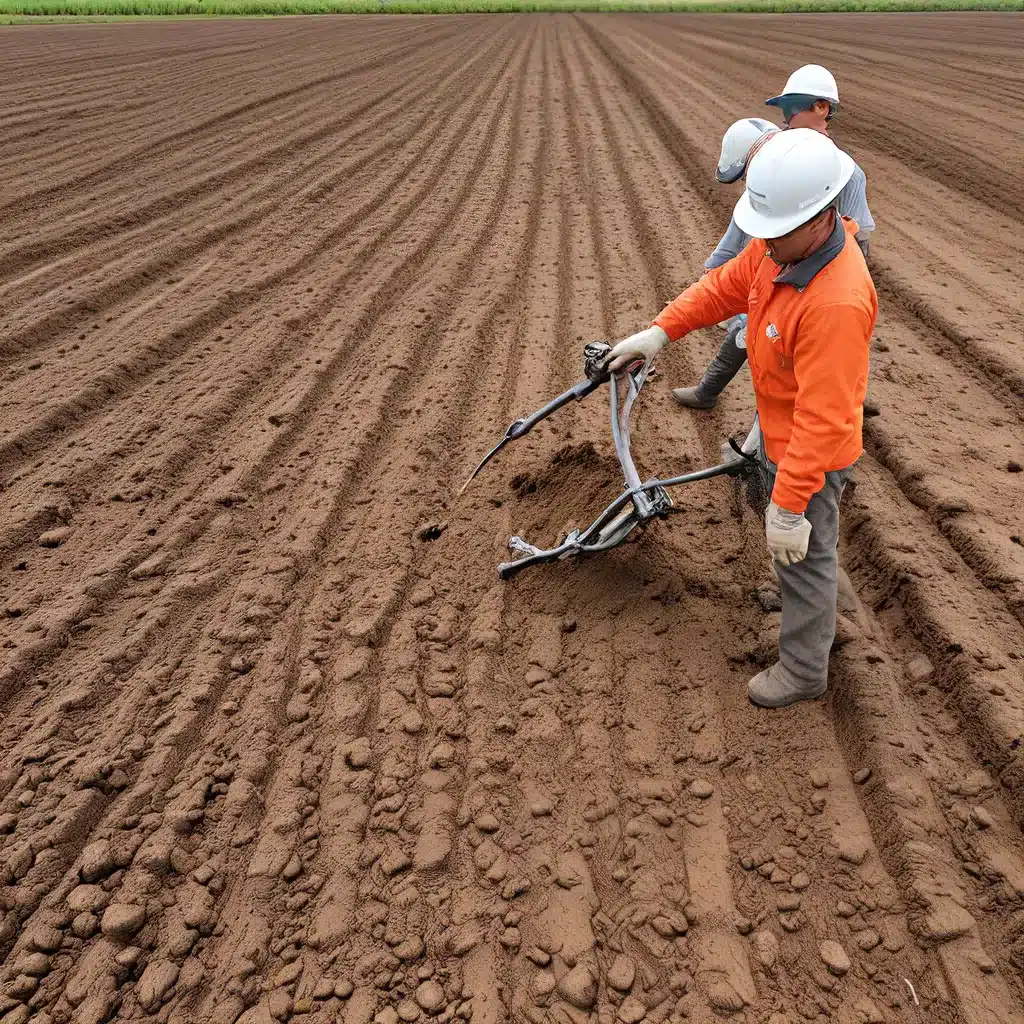
The Unexpected Breakthrough That’s Transforming Soil Cleanup
Have you ever experienced that moment of pure wonder and excitement when an unexpected discovery turns everything you thought you knew on its head? Well, my friends, that’s precisely what’s happening in the world of soil remediation right now, and I can’t wait to share it with you.
Picture this: you’re a soil scientist, tasked with the daunting challenge of cleaning up a heavily contaminated site. You’ve tried all the usual methods – excavation, chemical treatment, bioremediation – but nothing seems to be making a real dent. The soil is stubbornly refusing to relinquish its pollutants, and you’re starting to feel like you’re fighting a losing battle.
But then, out of the blue, you stumble upon a game-changing technology that just might be the answer to your prayers: electrical resistance heating (ERH). And let me tell you, this isn’t your run-of-the-mill soil cleanup approach. No, this is something special – a revolutionary technique that’s poised to turn the entire industry on its head.
Unraveling the Magic of Electrical Resistance Heating
So, what exactly is this electrical resistance heating wizardry, and how is it transforming the way we tackle soil contamination? Well, my friends, let me break it down for you.
At its core, electrical resistance heating is a deceptively simple concept. You take a contaminated soil, and you run an electrical current through it. As the current passes through the soil, it encounters resistance, which in turn generates heat. And this heat, my friends, is the key to unlocking the true potential of ERH.
According to a recent study published in the National Library of Medicine, this heat can reach temperatures of up to 100°C (212°F) – hot enough to vaporize even the most stubborn organic pollutants. And the best part? This process can be precisely controlled and targeted, ensuring that only the contaminated areas are subjected to the heat treatment.
But the magic doesn’t stop there. Experts have found that this heating process can also be combined with other remediation techniques, creating a synergistic effect that amplifies the overall effectiveness of the cleanup. Imagine a team of soil superheroes, each with their own unique power, coming together to vanquish the forces of pollution.
Tackling Tough Contaminants with Ease
Now, you might be wondering, “Okay, this all sounds great, but what kind of contaminants can electrical resistance heating actually tackle?” Well, my friends, the answer might just surprise you.
According to the latest research, ERH is an absolute powerhouse when it comes to dealing with stubborn organic pollutants – the kind of nasty chemicals that can linger in the soil for years, resisting even the most advanced traditional cleanup methods.
Think about it: chlorinated solvents, pesticides, polycyclic aromatic hydrocarbons (PAHs), even the dreaded PCBs – these are all contaminants that have historically been a major headache for soil remediation experts. But with the intense heat generated by electrical resistance heating, these pollutants simply don’t stand a chance.
And the best part? ERH isn’t just effective, it’s also incredibly versatile. Whether you’re dealing with a heavily industrialized site, a former military base, or even a rural agricultural area, this technology can be adapted to suit the unique challenges of each situation.
Revolutionizing the Future of Soil Remediation
So, what does the future hold for electrical resistance heating in the world of soil remediation? Well, my friends, I can tell you that the sky’s the limit.
As more and more soil scientists and environmental professionals discover the power of this technology, we’re likely to see a seismic shift in the way we approach soil cleanup. Suddenly, those hard-to-treat sites that were once considered lost causes are being transformed into clean, thriving ecosystems, thanks to the sheer force of a little electrical current.
And the implications of this breakthrough go far beyond just soil remediation. Imagine the impact it could have on groundwater protection, on the rehabilitation of abandoned industrial sites, on the resilience of our agricultural systems in the face of emerging contaminants. The possibilities are truly endless.
Of course, as with any revolutionary technology, there are still some challenges to overcome. Navigating the complex regulatory landscape, ensuring cost-effectiveness, and addressing any potential environmental or health concerns will all be critical factors in the widespread adoption of ERH.
But I have a feeling that the ingenuity and determination of the soil remediation community will be more than up to the task. After all, we’re talking about the future of our planet here – and when the stakes are that high, there’s no challenge too great to overcome.
So, my friends, get ready to witness the dawn of a new era in soil cleanup. Electrical resistance heating is here, and it’s about to shake the very foundations of the industry. Who knows – maybe one day, we’ll look back on this moment and realize that it was the spark that ignited a true environmental revolution.
Inland Waters Inc. is at the forefront of this exciting new frontier, and we can’t wait to see what the future holds. Join us on this journey as we unlock the true potential of electrical resistance heating and transform the way we think about soil remediation.


